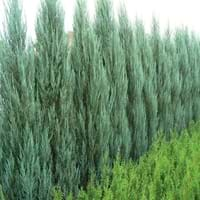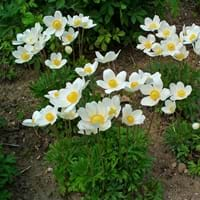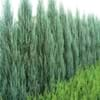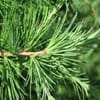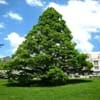Life Span
Perennial
Perennial
Type
Needled or Scaled Evergreen
Tender Perennial
Origin
Hybrid origin, North America
Mediterranean
Types
Not Available
Blue Anemone, Greek Windflower, Carolina Anemone, Chinese Anemone
Number of Varieties
Not Available
Habitat
Cold Regions, Dry areas, Dry Forest
Wild
USDA Hardiness Zone
3-7
8-12
Sunset Zone
1a, 1b, 2a, 2b, 3a, 3b, 5, 6, 7, 8, 9, 10, 11, 12, 13, 14, 15, 16, 17, 18, 19, 20, 21, 22, 23, 24
4, 5, 6, 7, 8, 9, 10, 11, 12, 13, 14, 15, 16, 17, 18, 19, 20, 21, 22, 23, 24
Habit
Pyramidal
Clump-Forming
Minimum Height
Not Available
Minimum Width
Not Available
Flower Color
Non Flowering Plant
Sky Blue
Flower Color Modifier
Bicolor
Not Available
Fruit Color
Blue
Not Available
Leaf Color in Spring
Green
Green
Leaf Color in Summer
Green
Yellow, Green
Leaf Color in Fall
Green
Not Available
Leaf Color in Winter
Green
Not Available
Leaf Shape
Acicular
Compound
Plant Season
Spring, Summer, Fall
Spring
Sunlight
Full Sun
Partial Sun, Partial shade
Type of Soil
Clay, Loam, Sand
Loam
The pH of Soil
Acidic, Neutral, Alkaline
Acidic, Neutral
Soil Drainage
Well drained
Average
Bloom Time
Spring
Early Spring, Spring, Late Spring, Early Summer
Where to Plant?
Ground
Ground, Pot
How to Plant?
stem tip cuttings, Tip cutting
Seedlings
Plant Maintenance
Medium
Medium
Watering Requirements
Average Water Needs, Do not water frequently
Medium, Prefer drip-irrigation instead of Over-head watering, Use Mulches to help prevent water loss during hot and windy weather, Water Deeply
In Summer
Lots of watering
Lots of watering
In Spring
Moderate
Moderate
In Winter
Average Water
Average Water
Soil pH
Acidic, Neutral, Alkaline
Acidic, Neutral
Soil Type
Clay, Loam, Sand
Loam
Soil Drainage Capacity
Well drained
Average
Sun Exposure
Full Sun
Partial Sun, Partial shade
Pruning
Remove damaged leaves, Remove dead branches, Remove dead leaves
Prune prior to new growth, Remove dead or diseased plant parts, Remove deadheads
Fertilizers
All-Purpose Liquid Fertilizer
All-Purpose Liquid Fertilizer
Pests and Diseases
Red blotch
Botrytis collar rot, Crown gall, Cucumber mosaic, Downy mildew, Impatiens necrotic spot, Leaf curl, Phytophthora, Rhizoctonia crown rot, Root rot, Rust, Sclerotinia blight, Southern blight
Plant Tolerance
Drought
Drought
Flowers
Insignificant
Showy
Flower Petal Number
Single
Single
Fragrant Bark/Stem
Yes
No
Foliage Texture
Medium
Fine
Foliage Sheen
Not Available
Matte
Attracts
Aphids, Early/Late Blight
Not Available
Allergy
Not Available
Skin irritation
Aesthetic Uses
Not Used For Aesthetic Purpose
Not Used For Aesthetic Purpose
Beauty Benefits
Not Available
Not Available
Environmental Uses
Air purification
Air purification
Medicinal Uses
Cold, Cough, Laxative
Asthma, Cough, Gout, Menstrual Disorders, Stomach pain
Part of Plant Used
Shoots, Stem
Flowers, Leaves
Other Uses
Not Available
Not Available
Used As Indoor Plant
No
No
Used As Outdoor Plant
Yes
Yes
Garden Design
Foundation, Hedges, Mixed Border, Rock Garden, Wall, Screening, Wind Break
Bedding Plant, Container, Mixed Border, Rock Garden / Wall, Wildflower
Botanical Name
JUNIPERUS scopulorum 'Cologreen'
ANEMONE 'Harmony Blue'( HARMONY SERIES)
Common Name
Rocky Mountain juniper
Anemone, Harmony Blue Anemone
In Hindi
Juniperus scopulorum
रत्नज्योति
In German
Juniperus scopulorum
Anemone
In French
Juniperus scopulorum
Anémone
In Spanish
Juniperus scopulorum
Anémona
In Greek
Juniperus scopulorum
ανεμώνη
In Portuguese
Juniperus scopulorum
Relutantemente
In Polish
Juniperus scopulorum
Zawilec
In Latin
Juniperus scopulorum
VivoSocial
Phylum
Tracheophyta
Magnoliophyta
Class
Pinopsida
Magnoliopsida
Order
Pinales
Ranunculales
Family
Cupressaceae
Ranunculaceae
Clade
Not Available
Not Available
Tribe
Not Available
Not Available
Subfamily
Not Available
Not Available
Importance of Juniperus scopulorum and Anemone
Want to have the most appropriate plant for your garden? You might want to know the importance of Juniperus scopulorum and Anemone. Basically, these two plants vary in many aspects. Compare Juniperus scopulorum and Anemone as they differ in many characteristics such as their life, care, benefits, facts, etc. Every gardener must at least have the slightest clue about the plants he wants to plant in his garden. Compare their benefits, which differ in many ways like facts and uses. The medicinal use of Juniperus scopulorum is Cold, Cough and Laxative whereas of Anemone is Asthma, Cough, Gout, Menstrual Disorders and Stomach pain. Juniperus scopulorum has beauty benefits as follows: Not Available while Anemone has beauty benefits as follows: Not Available.
Compare Facts of Juniperus scopulorum vs Anemone
How to choose the best garden plant for your garden depending upon its facts? Here garden plant comparison will help you to solve this query. Compare the facts of Juniperus scopulorum vs Anemone and know which one to choose. As garden plants have benefits and other uses, allergy is also a major drawback of plants for some people. Allergic reactions of Juniperus scopulorum are Not Available whereas of Anemone have Skin irritation respectively. Having a fruit bearing plant in your garden can be a plus point of your garden. Juniperus scopulorum has no showy fruits and Anemone has no showy fruits. Also Juniperus scopulorum is not flowering and Anemone is not flowering . You can compare Juniperus scopulorum and Anemone facts and facts of other plants too.
